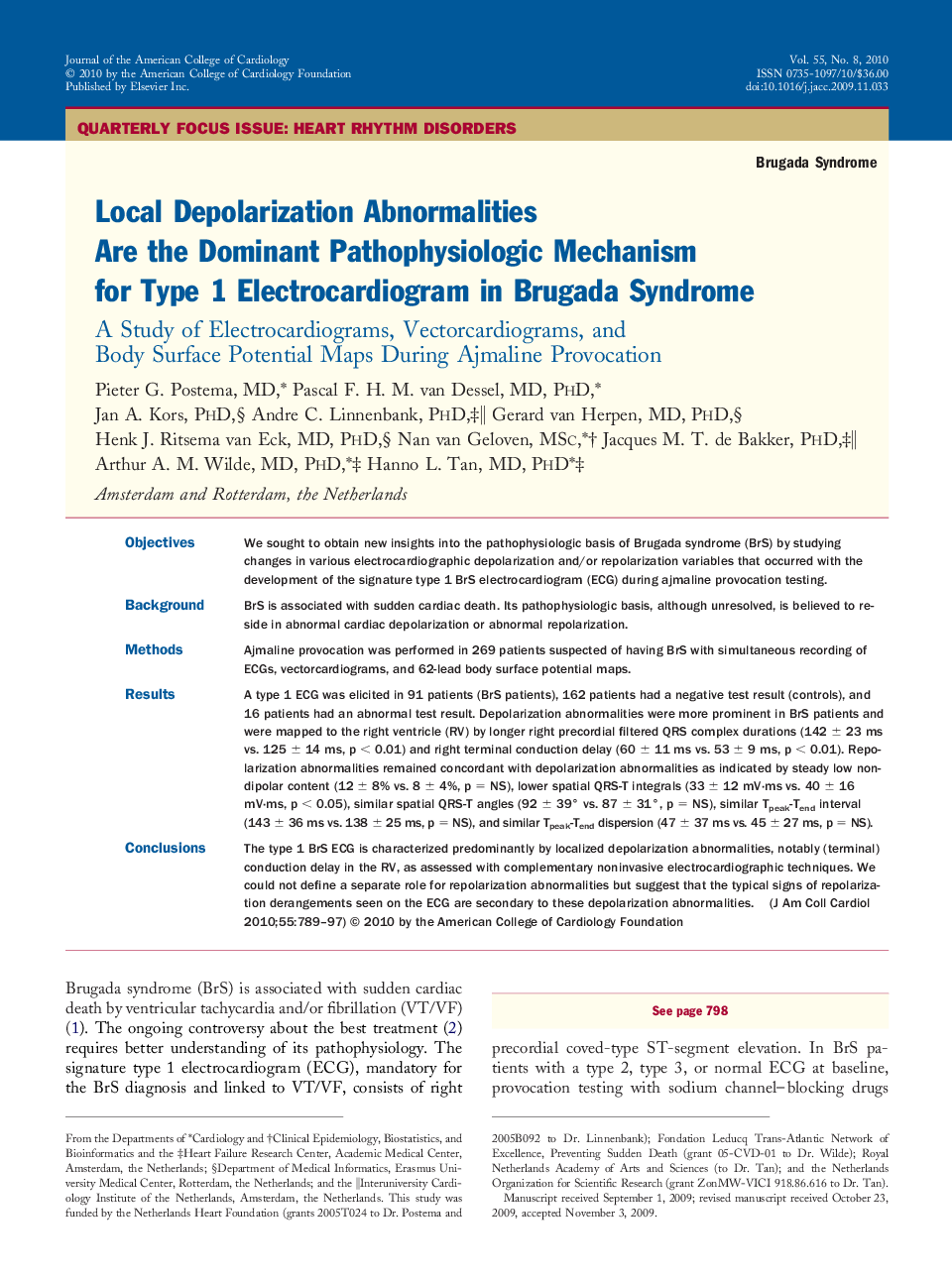| کد مقاله | کد نشریه | سال انتشار | مقاله انگلیسی | نسخه تمام متن |
|---|---|---|---|---|
| 2950133 | 1577330 | 2010 | 9 صفحه PDF | دانلود رایگان |

ObjectivesWe sought to obtain new insights into the pathophysiologic basis of Brugada syndrome (BrS) by studying changes in various electrocardiographic depolarization and/or repolarization variables that occurred with the development of the signature type 1 BrS electrocardiogram (ECG) during ajmaline provocation testing.BackgroundBrS is associated with sudden cardiac death. Its pathophysiologic basis, although unresolved, is believed to reside in abnormal cardiac depolarization or abnormal repolarization.MethodsAjmaline provocation was performed in 269 patients suspected of having BrS with simultaneous recording of ECGs, vectorcardiograms, and 62-lead body surface potential maps.ResultsA type 1 ECG was elicited in 91 patients (BrS patients), 162 patients had a negative test result (controls), and 16 patients had an abnormal test result. Depolarization abnormalities were more prominent in BrS patients and were mapped to the right ventricle (RV) by longer right precordial filtered QRS complex durations (142 ± 23 ms vs. 125 ± 14 ms, p < 0.01) and right terminal conduction delay (60 ± 11 ms vs. 53 ± 9 ms, p < 0.01). Repolarization abnormalities remained concordant with depolarization abnormalities as indicated by steady low nondipolar content (12 ± 8% vs. 8 ± 4%, p = NS), lower spatial QRS-T integrals (33 ± 12 mV·ms vs. 40 ± 16 mV·ms, p < 0.05), similar spatial QRS-T angles (92 ± 39° vs. 87 ± 31°, p = NS), similar Tpeak-Tendinterval (143 ± 36 ms vs. 138 ± 25 ms, p = NS), and similar Tpeak-Tenddispersion (47 ± 37 ms vs. 45 ± 27 ms, p = NS).ConclusionsThe type 1 BrS ECG is characterized predominantly by localized depolarization abnormalities, notably (terminal) conduction delay in the RV, as assessed with complementary noninvasive electrocardiographic techniques. We could not define a separate role for repolarization abnormalities but suggest that the typical signs of repolarization derangements seen on the ECG are secondary to these depolarization abnormalities.
Journal: Journal of the American College of Cardiology - Volume 55, Issue 8, 23 February 2010, Pages 789–797